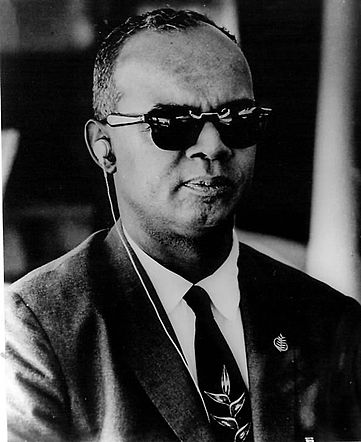On that day, all the troubles everyone and the country were facing, were forgotten so we could celebrate “Our” victory. Our then Prime Minister Patrick Manning declared a Nation Holiday just so the country could celebrate. On that day there was no colour, class, race or creed. We were united as a people around our achievers. Then we realized that this was a phenomena that happens every time one of our people achieves. When our famous cricketer Brian Lara broke the long standing record by Sir Garfield Sobers. The entire country erupted in celebration as though it was we who scored the runs. When Janelle Commissiong and Wendy Fitzwilliams wond Miss Universe, the entire country was there celebrating with them. “We won Miss Universe.”
Trinidad and Tobago even though it is a small country, have quite a list of achievers. The list is so long I won’t even attempt to list it here. Just to say that with each achievement, not just the individual, but the country was placed on the world stage. Because it was Trinidad and Tobago that produced this achievement. We the country don’t just celebrate our hero and their achievement, but the fact that they have achieved something that gave Trinidad and Tobago some recognition. These achievements allow people from around the world the opportunity to hear about this small twin island republic, whereas they would not have known about us before. When Nelson Mandela visited Trinidad and Tobago, one of the first questions he asked was “Where is Brian Lara?”
The celebration is not primarily about what the achievement was, but we celebrate the fact that they have achieved.
Then the proverbial light went on and I made a connection that gave me the tagline. I was here thinking and talking about Achievers, Achievements and the fact of Achieving. I had already looked at the country’s watchwords that didn’t help me much. I had forgotten however about the national motto.
Together We Aspire, Together We Achieve.
Th meaning of the motto is; “Once we dream, act and work together then we will succeed together.” It was established by the late first Prime Minister Dr Eric Williams, who himself was an achiever, when Trinidad and Tobago achieved independence in 1962. I could not have asked for a better tie in. In Trinidad and Tobago, we Aspire together and we Achieve together.
This motto however was all inclusive, but on a country level. It spoke only to Trinidadians and Tobagonians. I needed it to speak to everyone, including a global audience. To do that, I simply shortened it. Trinidad and Tobago “Aspire….Achieve”. In Trinidad and Tobago we Aspire and Achieve and if you come to Trinidad and Tobago, you also will Aspire and Achieve. What ever your Aspiration, you can Achieve it in Trinidad and Tobago. You Aspire to succeed in business investment? You can Achieve it in Trinidad and Tobago. You Aspire to a great cultural experience? You can achieve it in Trinidad and Tobago. You Aspire to a relaxing holiday in a tropical island? You can Achieve it in Trinidad and Tobago. To me, I had arrived at the perfect tagline, that was in a sense always there.
It was now time to to move on to the next phase of the design process.
About Everard McBain
Everard is the Creative Director and CEO of GemGfx. GemGfx is a multidisciplinary design consultancy based in Trinidad and Tobago. He has been involved in the field of Graphic Design for over 14 years.
Skype • Facebook • Twitter • Linkedin • Google • Youtube • Pinterest • Instagram •


[…] In response to the overwhelming support that we’ve received from our fellow designers, we’re once again giving away a very useful resource to help improve the presentation power of those who use it. This latest mockup was used on our Trinidad and Tobago Country Branding Case Study. […]